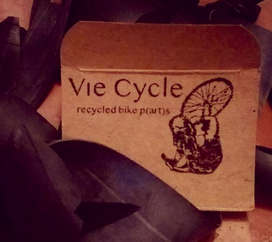|
2011: The year of the thesis. I was at Pitzer College, living in a house off-campus with five of my friends and most of us had elected to write a senior thesis to fulfill our graduation requirement. A house of six people with six distinct majors meant that hypothesizing and philosophizing abounded in our living room. It would have been hard to not learn from each other in this setting. My thesis was about the role of women in bicycle cooperatives and I like to think that all of my housemates developed a love for bikes because of my influence, but this post isn’t about that. This is about the Theory of Multiple Intelligences, the subject of my housemate Bennett’s thesis. Seven years after completing college, my thesis has informed my work, but Bennett’s thesis has informed my personal growth and lead to self-reflection that has changed my understanding of learning. The Theory of Multiple Intelligences is the foundation of the women+ bike maintenance workshops that I teach. I’ll explain what it is and how I use it. My hope is that you’ll learn something about yourself in the process.
1 Comment
If you only read the beginning of this post, this should be your take away:
Always smile and wave at drivers. ...No matter how you feel about them. It’s the best way to stay safe, be seen and gain respect. Even in a situation where someone turns their car in front of you and nearly kills you. Yes! Waving is still the best response. Many people respond to threats with anger and more than that, anger can be an automatic response and you don’t want someone impulsively responding with horsepower and their bumper. So next time you’re riding a bike and you have doubts about someone’s intentions behind the wheel, SMILE and WAVE. Not convinced? Great, keep reading!  It's become a habit of mine to collect/salvage interesting bike parts. This is probably something that I picked up in university. Our student-run bike collective had a deal with a local bike shop; they let us climb in their dumpster and take home any bike parts that we wanted. As a business, it was their job to put new parts on bikes at their customer's request. Sometimes perfectly good parts would get thrown away simply because shops can't sell used stuff. Thankfully lots of bike collectives have a similar deal with a local shop. Many bike shops recycle their rubber and metal already. Some even send away their old bike tubes to organizations like Green Guru or Alchemy Goods. (Encourage your local bike shop to recycle their parts if they aren't!) I've got my own use for broken and discarded bike parts. Use 1: I collect parts for class demos and tactile tools. (I'll write about my teaching philosophy and whyI think people need tactile tools to fiddle with to help lessons sink in in another post.) Use 2: Jewelry and bike art! That's what this is all about. I want to get real for a minute about being a woman who bikes and also drinks water. Yeah, I'm about to talk about peeing outside.
But let’s start with water.
Vie Cycle got a shout out in Adventure Cycling Association's monthly newsletter! It's short but concise.
In 2008 I found out about the Adventure Cycling Association (ACA) because, with 7 days before beginning my summer camp job, I decided to go on a 670 mile bike ride. Thankfully most of my friends at the time were equally insane, and I found two who were more than happy to join me.
|
Vie CyclingStories from the road and bike shops en route. Author: Sylvie FroncekI've ridden thousands of miles, led group bike tours, taught maintenance classes and started bike collectives, all in an attempt to share what I love with great people. Read about my adventures and tell me about yours! CategoriesArchives
March 2024
|





 RSS Feed
RSS Feed